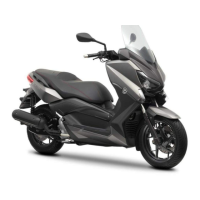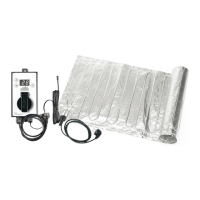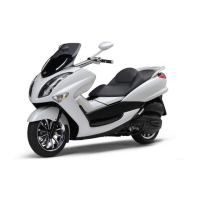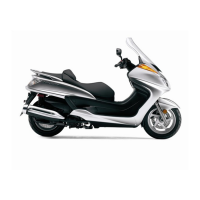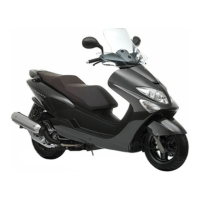What to do if my Yamaha MBK YQ100 Scooter has poor connections?
- MMichael ThomasAug 1, 2025
If your Yamaha Scooter's connections are poor, start by repairing the existing connections. If the issue persists, consider replacing the CDI unit.
What to do if my Yamaha MBK YQ100 Scooter has poor connections?
If your Yamaha Scooter's connections are poor, start by repairing the existing connections. If the issue persists, consider replacing the CDI unit.
Guide to understanding the manual's structure, symbols, and procedures for effective use.
Explanation of symbols used in the manual for chapters, procedures, and lubricants.
Details on identifying the scooter and its engine number for registration and reference.
Essential guidelines for removal, disassembly, parts, and safety precautions during maintenance.
Procedure for inspecting and ensuring proper electrical connections for reliable operation.
Instructions on converting metric unit data to imperial unit data using the provided table.
List of necessary special tools with part numbers for accurate tune-up and assembly.
Key dimensions, engine details, lubrication, fuel, and carburetor specifications for the model.
Engine component standards and limits for cylinder, piston, rings, and crankshaft measurements.
Specific torque values for engine parts to ensure proper assembly and function.
Chassis component standards and limits for steering, suspension, and wheels.
Specific torque values for chassis components to ensure proper assembly and function.
Electrical system component standards for ignition, charging, lighting, and signals.
General tightening torques for standard fasteners based on ISO thread pitch.
Identifies lubrication points for engine and chassis components and specifies lubricant types.
Diagrams and instructions for correctly routing cables and wires for safe operation.
Schedule for regular maintenance tasks, checks, and lubrication intervals.
Procedures for removing and installing various body covers like seat, side, and handlebar covers.
Procedures for checking and adjusting engine-related components like idling speed and oil level.
Procedures for checking and adjusting chassis components like brakes, wheels, and suspension.
Procedures for checking and maintaining electrical system components like battery, fuses, and lights.
Procedures for engine overhaul, including leads, hoses, exhaust pipe, and engine removal/installation.
Detailed steps for overhaul, inspection, and installation of cylinder head, cylinder, and piston.
Procedures for overhauling the V-belt, clutch, and primary/secondary sheaves.
Procedures for removing, inspecting, and installing the starter clutch and motor.
Procedures for removing and installing the C.D.I. magneto.
Procedures for removing and installing the autolube pump.
Procedures for transmission removal and checking its components.
Procedures for crankcase and reed valve removal and installation.
Procedures for crankshaft removal, inspection, and installation.
Procedures for removing, disassembling, checking, assembling, and installing the carburetor.
Procedures for inspecting the fuel cock and cleaning the fuel filter.
Procedures for removing, checking, and installing the reed valve.
Procedures for removing, disassembling, checking, and installing the front wheel and brake disc.
Procedures for removing, checking, and installing the rear wheel and brake system.
Detailed procedures for front brake pads, master cylinder, and caliper service.
Procedures for removing, disassembling, checking, and assembling the front fork legs.
Procedures for removing, checking, and installing the handlebar and its components.
Procedures for removing, checking, and installing the steering head assembly.
Procedures for removing and checking the rear shock absorber assembly.
Schematic diagrams illustrating the electrical system layout and connections.
Identification and location of key electrical components within the system.
Procedures for inspecting switches and checking their continuity and terminal connections.
Troubleshooting and circuit diagrams for the ignition and starting systems.
Procedures for starter motor removal, inspection, and testing.
Troubleshooting and circuit diagrams for the charging system.
Troubleshooting and circuit diagrams for the lighting system components.
Troubleshooting and circuit diagrams for the signal system, including lights and horn.
Diagnosing and resolving issues related to engine starting failures and hard starting.
Troubleshooting causes for poor engine idle speed performance.
Diagnosing issues affecting engine performance at medium and high speeds.
Troubleshooting problems with the automatic V-belt drive system.
Identifying causes and solutions for engine overheating issues.
Troubleshooting issues related to kick starter operation, slipping, or hardness.
Diagnosing and resolving poor braking effects or other brake system malfunctions.
Addressing front fork oil leaks, malfunctions, and general unstable handling.
Troubleshooting common issues with the signal and lighting systems.
